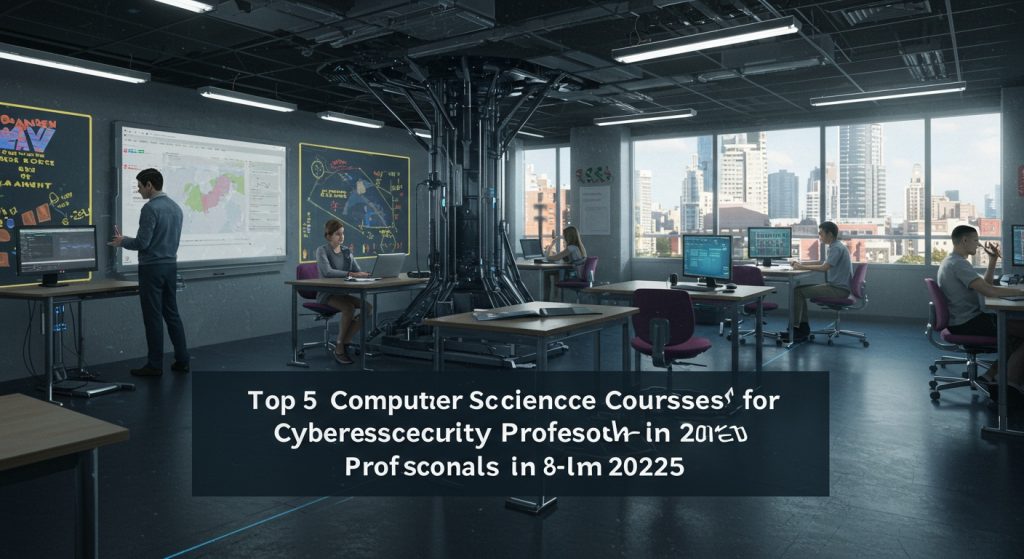The demand for sustainability professionals is surging, driven by commitments to net-zero emissions and resource management targets. We equip future leaders with the earth science expertise vital for navigating this evolving landscape. Gain critical skills in areas such as renewable energy assessment, climate change mitigation. Sustainable resource extraction. Explore how understanding geological formations impacts geothermal energy projects, or how hydrological modeling informs water resource management strategies. Our curriculum incorporates the latest advancements in remote sensing, data analytics. Environmental regulations, ensuring graduates are prepared to shape sustainability careers and contribute to a resilient future by 2025 and beyond.

Understanding Earth Science: The Foundation for Sustainability
Earth science, at its core, is the study of our planet – its structure, processes. History. It encompasses a wide range of disciplines, from geology and oceanography to atmospheric science and environmental science. This broad perspective is crucial for understanding the complex interactions that drive our planet’s systems and, consequently, for developing sustainable practices.
Think of Earth science as the diagnostic tool for understanding planetary health. Just as a doctor needs to grasp anatomy and physiology to diagnose and treat a patient, we need a solid understanding of Earth science to identify and address environmental challenges.
For instance, understanding the rock cycle (a fundamental concept in geology) helps us interpret where and how natural resources are formed, guiding sustainable resource extraction strategies. Similarly, knowledge of atmospheric science is essential for understanding climate change and developing mitigation strategies. Without this fundamental knowledge provided by relevant courses, pursuing a sustainability career becomes significantly more challenging.
The Core Earth Science Courses: A Curriculum for Change
Several core courses form the bedrock of an Earth science education that prepares individuals for sustainability careers. These courses provide a comprehensive understanding of the Earth system and its complexities.
- Physical Geology: This course explores the materials that make up the Earth, the processes that shape its surface. The forces that drive plate tectonics. Understanding these fundamental principles is crucial for assessing geological hazards, managing natural resources. Evaluating the environmental impact of human activities.
- Oceanography: Covering the physical, chemical. Biological aspects of the oceans, this course provides insights into ocean currents, marine ecosystems. The role of the ocean in climate regulation. Understanding ocean acidification, for example, is vital for developing strategies to protect marine biodiversity.
- Atmospheric Science: This course delves into the composition, structure. Dynamics of the atmosphere, including weather patterns, climate change. Air pollution. It equips students with the knowledge to review climate data, model atmospheric processes. Develop strategies for reducing greenhouse gas emissions.
- Environmental Science: This interdisciplinary course examines the interactions between humans and the environment, covering topics such as pollution, resource depletion. Biodiversity loss. It integrates concepts from biology, chemistry. Earth science to provide a holistic understanding of environmental issues.
- Hydrology: Focuses on the movement, distribution. Quality of water throughout the Earth. Understanding hydrological cycles, groundwater resources. Water pollution is crucial for sustainable water management.
Beyond the Basics: Specialized Courses for Sustainability
While the core courses provide a foundational understanding, specialized courses delve deeper into specific areas of sustainability. These courses equip students with the specialized knowledge and skills needed to address complex environmental challenges.
- Geochemistry: This course examines the chemical composition of the Earth and the processes that control the distribution of elements and isotopes. It’s crucial for understanding pollution pathways, assessing the environmental impact of mining. Developing remediation strategies.
- Geophysics: Using physics to study the Earth’s interior, this course provides insights into earthquakes, volcanoes. The structure of the Earth’s crust. It’s vital for assessing geological hazards and developing strategies for mitigating their impact.
- Remote Sensing and GIS: These courses teach students how to use satellite imagery and geographic insights systems (GIS) to examine environmental data, map land use changes. Monitor natural resources. These tools are essential for environmental monitoring, resource management. Urban planning.
- Climate Modeling: This course focuses on developing and using computer models to simulate the Earth’s climate system. It equips students with the skills to project future climate scenarios, assess the impact of climate change. Develop mitigation strategies.
- Environmental Law and Policy: Understanding the legal and regulatory frameworks governing environmental protection is crucial for implementing sustainable practices. This course examines environmental laws, regulations. Policies at local, national. International levels.
The Power of GIS and Remote Sensing: Visualizing Sustainability
Geographic data Systems (GIS) and remote sensing are powerful tools for analyzing and visualizing spatial data. They play a critical role in understanding and addressing environmental challenges.
GIS is a software system that allows users to capture, store, examine. Display geographic data. It can be used to map land use, monitor deforestation, track pollution. Assess the vulnerability of communities to climate change.
Remote sensing involves acquiring data about the Earth’s surface from a distance, typically using satellites or aircraft. Remote sensing data can be used to monitor vegetation health, track changes in land cover. Assess the impact of natural disasters.
Comparison: GIS vs. Remote Sensing
| Feature | GIS | Remote Sensing |
|---|---|---|
| Data Type | Vector and Raster data | Raster data (satellite imagery, aerial photos) |
| Purpose | Analysis, mapping. Management of spatial data | Acquisition of data about the Earth’s surface from a distance |
| Applications | Urban planning, resource management, environmental monitoring | Land cover mapping, vegetation monitoring, disaster assessment |
For example, GIS can be used to map the distribution of endangered species and identify critical habitats. Remote sensing can be used to monitor deforestation rates in the Amazon rainforest. Combining these technologies provides a powerful tool for understanding and addressing environmental challenges. Many courses now incorporate these technologies into their curriculum.
Real-World Applications: Earth Science in Action
The knowledge and skills gained from Earth science courses are directly applicable to a wide range of sustainability careers. Here are a few examples:
- Environmental Consultant: Earth science courses provide the foundation for assessing environmental impacts, developing remediation plans. Ensuring compliance with environmental regulations.
- Sustainability Manager: These professionals develop and implement sustainability strategies for organizations, using their understanding of Earth science to reduce environmental impact and improve resource efficiency.
- Climate Scientist: Atmospheric science and climate modeling courses prepare individuals to conduct research on climate change, project future climate scenarios. Develop mitigation strategies.
- Hydrologist: Hydrology courses provide the knowledge and skills needed to manage water resources, assess water quality. Mitigate the impact of droughts and floods.
- Geospatial Analyst: Remote sensing and GIS courses equip individuals with the skills to review spatial data, create maps. Develop solutions for environmental problems.
Consider the example of a brownfield site – a former industrial area contaminated with pollutants. An environmental consultant with a strong Earth science background, including courses in geochemistry and hydrology, would be able to assess the extent of the contamination, grasp the pathways of pollutant transport. Develop a remediation plan to restore the site to a safe and usable condition. This requires a deep understanding of soil science, groundwater flow. The chemical properties of the pollutants involved. These are all concepts covered in detail in the relevant courses.
The Future of Sustainability Careers: Adapting to a Changing World
The demand for sustainability professionals is growing rapidly as businesses, governments. Organizations recognize the need to address environmental challenges. The Earth science courses mentioned above are crucial for preparing individuals for these careers. But, the field of sustainability is constantly evolving, so it’s crucial to stay up-to-date on the latest trends and technologies.
One key trend is the increasing use of data analytics and artificial intelligence (AI) in environmental science. AI can be used to examine large datasets, identify patterns. Predict future environmental changes. For example, AI can be used to predict the spread of invasive species, optimize water resource management. Improve the efficiency of renewable energy systems.
Another vital trend is the growing focus on circular economy principles, which aim to minimize waste and maximize resource utilization. Earth science courses can provide insights into the life cycle of materials, the environmental impacts of different products. The potential for recycling and reuse. Understanding material science, mineralogy (covered in geology courses). Waste management techniques becomes paramount.
To succeed in sustainability careers in 2025 and beyond, it’s crucial to have a strong foundation in Earth science, combined with skills in data analytics, AI. Circular economy principles. Continuously learning and adapting to new technologies and approaches is essential for navigating the complex and ever-changing landscape of sustainability.
Conclusion
As we look toward 2025, the demand for sustainability professionals grounded in Earth science is only set to intensify. We’ve explored the essential courses that build a solid foundation, from understanding Earth’s systems to mastering data analysis and environmental policy. Think of each course as a critical piece of a larger puzzle. My personal experience in renewable energy consulting has shown me that a deep understanding of geological surveys, for example, can be the difference between a successful wind farm project and an environmental disaster. The key to unlocking a successful sustainability career lies not just in accumulating knowledge. In applying it innovatively. Don’t be afraid to combine seemingly disparate fields – perhaps integrating remote sensing data with economic modeling to predict resource scarcity. Start building your network now, attending webinars and connecting with professionals on platforms like LinkedIn. Your action item: identify one skill gap in your profile and commit to filling it with an online course or workshop within the next quarter. Remember, the future of our planet rests on the shoulders of informed and dedicated individuals like you. Embrace the challenge. Build a future where sustainability thrives.
More Articles
Government Vs Private Universities: Which Offers Better Career Support?
Top Ranking Factors: What Makes A University Great?
Private University Advantages: Are They Worth The Cost?
Top Universities in California: A 2025 Guide
FAQs
So, Earth Science courses for sustainability careers… What’s the big deal for 2025?
Good question! , the world needs more people who comprehend how the Earth works and how to make things sustainable. These courses equip you with the knowledge to tackle challenges like climate change, resource management. Environmental pollution in a really practical way.
What kind of Earth Science are we talking about here? Is it all rocks and minerals?
Not just rocks (though those are cool too!). Think broader. We’re talking about geology (yep, rocks!). Also hydrology (water!), climatology (weather patterns!), soil science. Even some geochemistry (how elements move around in the Earth system). It’s a multidisciplinary field.
Okay, sounds intense. What specific careers are we looking at after taking these courses?
Lots of options! Environmental consultant, sustainability analyst, renewable energy specialist, hydrogeologist (groundwater expert!) , climate change adaptation planner… the list goes on. , anything where you’re helping businesses or communities become more environmentally responsible or resilient.
Are these courses mostly theory, or will I actually get to, you know, do stuff?
That depends on the specific course. A good one will have a healthy mix of both. Expect lectures and readings to build your foundational knowledge. Also lab work, fieldwork (hiking and taking samples!) , data analysis. Maybe even some project-based learning where you get to solve real-world problems.
What skills should I expect to develop from these courses that are useful for a sustainability career?
Beyond the Earth science knowledge itself, you’ll hone your critical thinking, problem-solving, data analysis. Communication skills. Being able to interpret data, identify environmental risks. Explain complex issues to others is crucial in this field.
Do I need to be a science whiz already to succeed in these courses?
Not necessarily! A solid foundation in math and science is helpful. A strong interest in the environment and a willingness to learn are even more vital. Many introductory courses are designed to get you up to speed.
Where can I find these essential Earth Science courses?
Most universities and colleges offer Earth Science or Environmental Science programs. Look for programs that have a strong focus on sustainability and practical applications. Don’t be afraid to browse course catalogs and read faculty bios to find the best fit for your interests.



